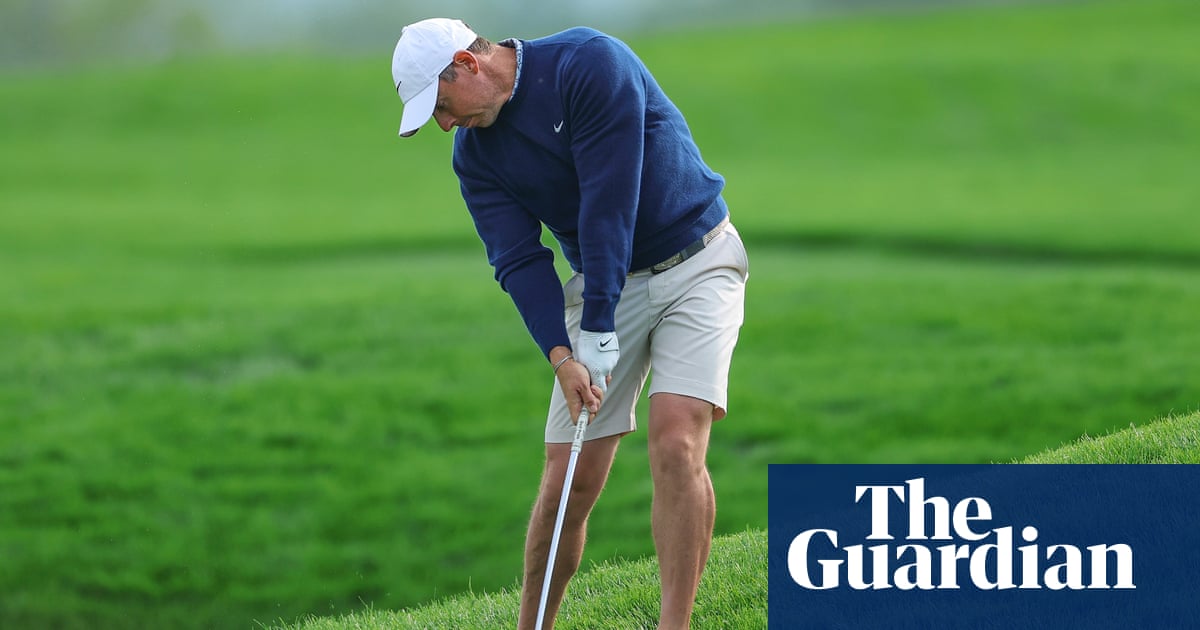For an example of how fiendishly difficult Oakmont may play in this, the 125th US Open, take the testimony ofRory McIlroy. The Masters champion visited the venue just outside Pittsburgh at the start of last week on a scouting mission. On Tuesday, he gave a grisly definition of what unfolded.
“Last Monday felt impossible,” McIlroy said. “I birdied the last two holes for 81. It felt pretty good, it didn’t feel like I played that badly. It’s much more benign right now than it was that Monday. They had the pins in dicey locations and greens were running at 15.5 [on the stimpmeter]. It was nearly impossible. This morning it was a little softer. The pins aren’t going to be on 3 or 4% slopes all the time.
“If you put it in the fairway, it’s certainly playable. But then you just have to think about leaving your ball below the hole and just trying to make as many pars as you can. You get yourself in the way of a few birdies, that’s a bonus.
“I’m glad we have spotters out there because last Monday you hit a ball off the fairway and you were looking for a good couple of minutes just to find it. It’s very penal if you miss. Sometimes it’s penal if you don’t miss. The person with the most patience and the best attitude this week is the one that’s going to win.”
Oakmont’s rough is notoriously thick, which plays a key role in scores being high. Ángel Cabrera prevailed when five over par in 2007. “There’s going to be times when you miss the fairway by a foot and you’re going to have to punch out 20, 50 yards at best,” said Jon Rahm. “At that point, it’s luck of the draw.”
In theory, none of this bodes particularly well for McIlroy. He has endured recent struggles with driver in hand, including when missing the cut atlast weekend’s Canadian Open. That club has been replaced before the third major of the year.
McIlroy’s issue is not really a technical one, though. Scaling the mountain at Augusta National in April, where hecompleted the career grand slam, has placed the Northern Irishman in intriguing psychological territory. Quite naturally, the resetting of goals has proved tricky.
“I’m sort of just taking it tournament by tournament at this point,” the world No 2 said. “You dream about the final putt going in at the Masters but you don’t think about what comes next. I think I’ve always been a player that struggles to play after a big event, after I win whatever tournament. I always struggle to show up with motivation the next week because you’ve just accomplished something and you want to enjoy it and you want to sort of relish the fact that you’ve achieved a goal.
“Chasing a certain goal for the better part of a decade and a half, I think I’m allowed a little bit of time to relax a little bit.” McIlroy will spend the opening two rounds in the company of fellow European Ryder Cup players Shane Lowry and Justin Rose.
Sign up toThe Recap
The best of our sports journalism from the past seven days and a heads-up on the weekend’s action
after newsletter promotion
A year ago,Byson DeChambeau pipped McIlroyto the US Open at Pinehurst. “The rough is so long,” said the defending champion of Oakmont. “I think everybody knows this is probably the toughest golf course in the world right now. You have to hit the fairways, you have to hit greens and you have to two-putt, worst-case scenario. When you’ve got those putts inside 10 feet, you’ve got to make them. It’s a great test of golf.”
DeChambeau has emerged as LIV Golf’s most valuable asset, which renders the end of his current contract with the Saudi Arabian-backed tour an interesting moment in time. The Californian appears confident of staying within his current playing domain. “Next year is when it ends,” he said of his LIV deal. “We’re looking to negotiate end of this year and I’m very excited. They see the value in me. I see the value in what they can provide, and I believe we’ll come to some sort of resolution on that. Super-excited for the future. I think that LIV is not going anywhere.
“His Excellency [Yasir al-Rumayyan] has been steadfast in his belief on team golf and whether everybody believes in it or not, I think it’s a viable option. I think it’s a viable commercial option.”
